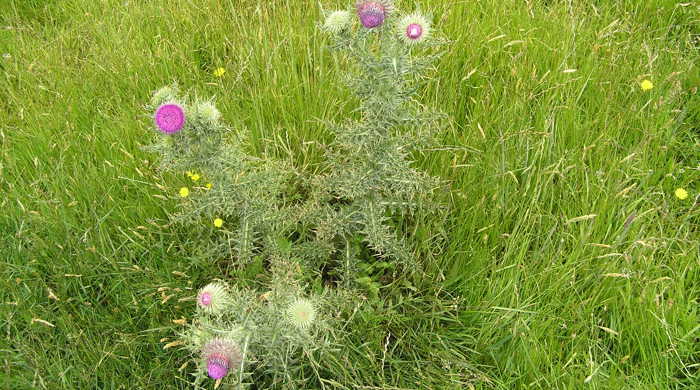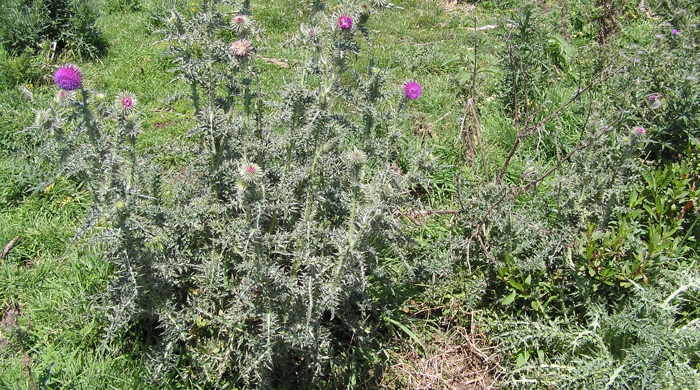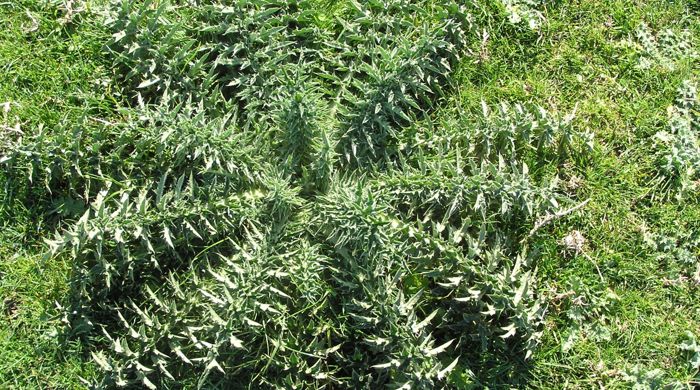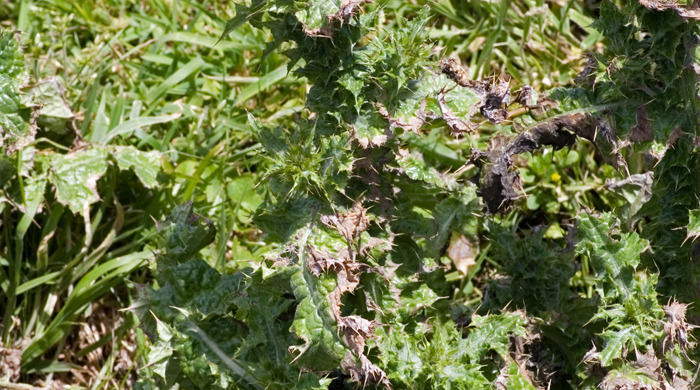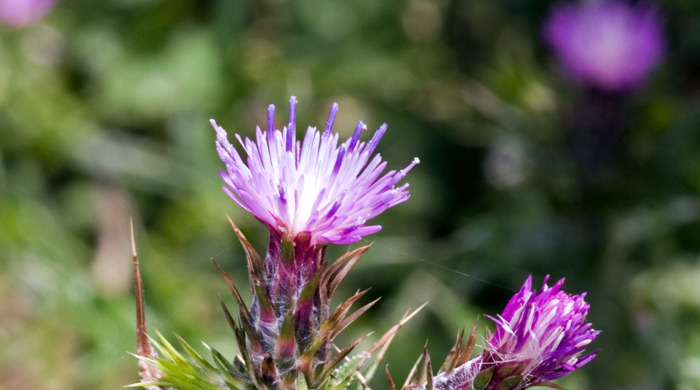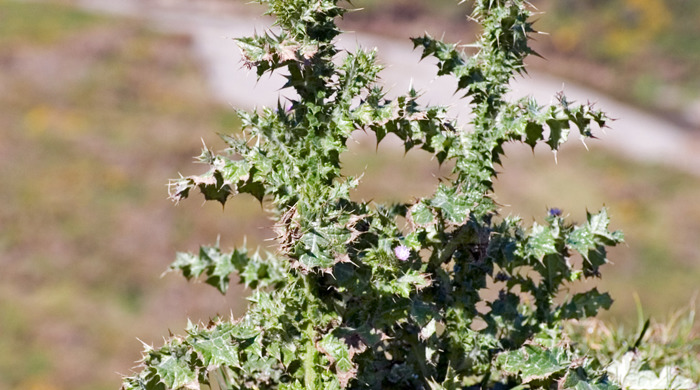Carduus nutans
Nodding thistle
Also known as:
Musk thistle
Family: Asteraceae
Origin: Eurasia
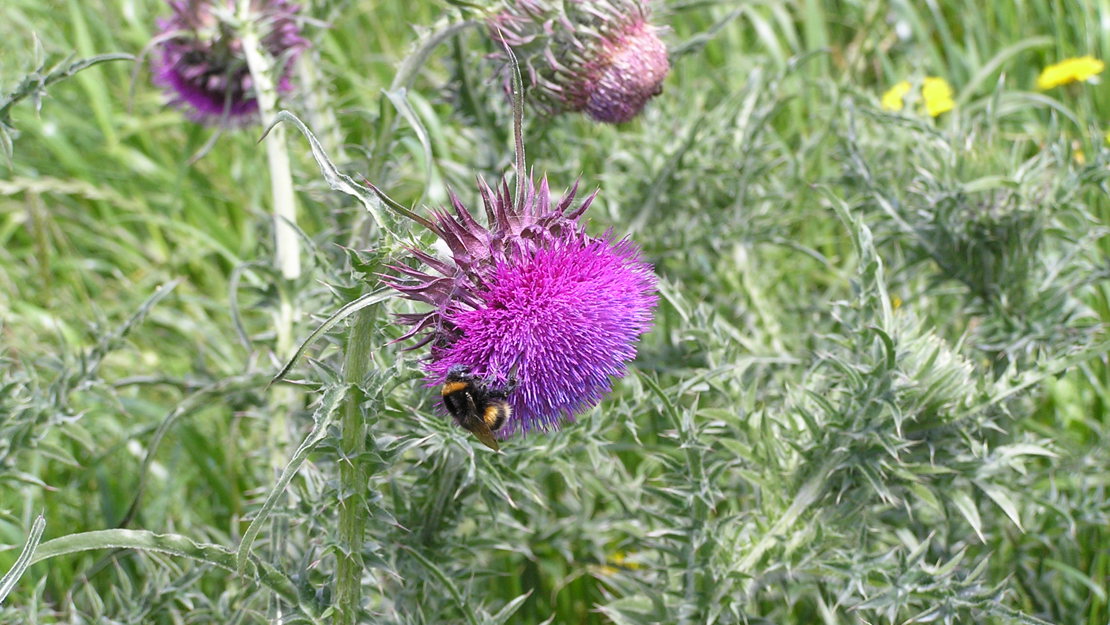
Regional Pest Management Plan (RPMP) status
- Whole region — Sustained control
- Hauraki Gulf Controlled Area Notice pest
General description
Annual or biennial thistle. Taproot is long and fleshy. Leaves are long, narrow and spiny. Flowers are drooping, purple and borne on erect flower stems in spring-summer. Seeds are attached to pappus.
What you need to know
To help protect our environment:
- You must not breed, distribute, release or sell nodding thistle within the Auckland region.
- You must not plant nodding thistle within the Auckland region.
- You must destroy all nodding thistle plants on land that you occupy.
Habitats
Pasture, wasteland, roadsides.
Dispersal
Seeds dispersed by wind, soil movement. Human-mediated dispersal through movement of contaminated soil, machinery and agricultural materials.
Impact on environment
Suppresses valued pasture plants and impedes livestock access to forage. Allelopathic.
Control
Site Management
Maintaining good pasture cover can prevent establishment or suppress an infestation. Prevent overgrazing especially in summer. Other herbicides are available for selective use in pasture.
Recommended approaches
Physical control
Method: Dig or grub out at least the first 5cm of taproot.
Plant parts requiring disposal: Seeds.
Disposal options: Remove to greenwaste or landfill if practical.
Biocontrol
Check for the presence of agents:
- Nodding thistle receptacle weevil (Rhinocyllus conicus)
- Nodding thistle gall fly (Urophora solstitalis)
- Nodding thistle crown weevil (Trichosirocalus horridus).
For more information about how biocontrol works, see What is biocontrol?
Community agrichemical control recommendations
No qualifications: Foliar spray with 100ml glyphosate green per 10L of water.
Certified Handler/Experienced agrichemical user: Foliar spray with 100ml glyphosate green per 10L of water and 20ml penetrant.
Safety notes
Plant has spines.
Caution: When using any herbicide or pesticide please read the label thoroughly to ensure that all instructions and safety requirements are followed.
